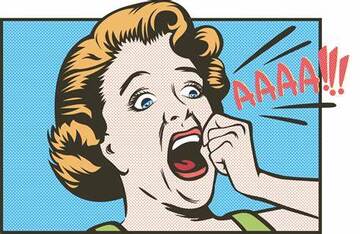 We’ve been hearing a lot about the ability of AI to write books, but is it something that indie authors really have to be frightened about? This is a difficult assessment for an author to make. We see this as something that is going to undermine our talent, so we fear it. When we fear something, we never take a positive view of it, so any assessment that we try to make isn’t going to be objective. I’m not an expert in AI, but I am an author (as well as a publisher) so I want to try to understand this issue better, so I can make an objective assessment of how big a threat AI is to our profession.  From a commercial point of view, having a computer programme write novels is an attractive prospect for publishers. Computer programmes, once paid for, don’t need to be paid again. If they can create a few books that sell well, they will have paid for themselves and after that all future books are pure profit. If the programme is producing quality product first time, every time, you also don’t have to pay editors or proof readers. With AI also capable of producing quality artwork, cover design is also something that doesn’t have to be paid for. We know that last example is true, because we use a commercially available design package to create covers from images we purchase the rights for on-line. 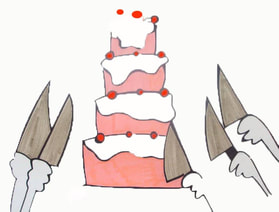 We can also be sure that there are plenty of opportunists in the world who will use AI to create books which they will then try to sell, pretending that they have created the work, even if it is poor quality Even if people don’t like the book, the “author” can repeat this trick many times over by publishing more books under different names. There are probably authors doing this already with books they really did write themselves. AI will just make it easier for them. It is possible to detect books written by AI, using the right tools. However, as AI becomes more advance it is getting harder to tell the difference between AI written work and “the real thing”. 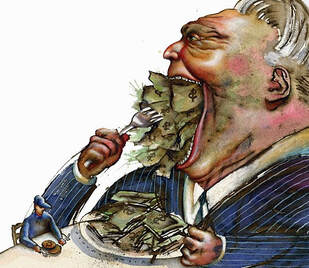 Don’t expect retailers to intervene here, because all they are interested in is their share of the sales income. We know this because of some of the rubbish that is sold on their websites currently. There is one advantage that human writers have that AI doesn’t. According to Stanford University researchers, AI doesn’t understand the purpose of books. While it can develop a plot to fit the description input by the “author”, the AI system may put in unexpected twists that means the resulting output doesn’t actually make sense in logical terms. The AI “knows” that readers like plot twists. What it doesn’t know is that the plot twist has to make logical sense. In an AI book Character A may turn out to be the murderer, but the logic behind them carrying out the murder may not make sense to us humans; it just has to make sense to the AI programme because it is a plot twist.  Where AI does help the author is in correcting grammar, punctuation, syntax etc and suggesting synonyms that the author may not have considered. That can make a poorly educated writer with good story ideas into a better writer. In other words, AI fulfils the role of a text editor. If you are a text editor reading this, you may want to consider a career change because that sort of AI is already with us and is being used. Autocorrect and Grammarly have been around for decades and they are just the tip of the AI iceberg. And there is really no way to detect that sort of AI if you haven’t seen any of the author’s uncorrected efforts. Even then it isn't always obvious to the reader. There is an area where AI is of considerable advantage and that is in content writing. Writing content for website landing pages, blogs, advertising copy etc can produce adequate work quickly and more cheaply than employing a content writer and a lack of originality isn’t a factor. If that is your profession then you, too, might want to consider your future. Where AI fails is from where it takes its input. In order to “create” a book, it analyses sources from across the world wide web and combines it together to create a story that meets the criteria for the book that the “author” has set. For example, to create a fantasy novel it will analyse existing fantasy novels of a similar type and then use the tropes and vocabulary found in those books to “create” a new novel..  This introduces the risk of plagiarism. Because the distance between “analysing” and ”copying” is a very small one in computer terms. As lawsuits in the past have proven, it only requires a few similarities in a plot for a court to find in favour of the plaintive. Dan Brown has been sued for plagiarism three times for his Robert Langdon books, though none of the lawsuits have yet been successful. But lawyers made huge amounts of money out of those cases. Q.R. Markham, a.k.a. Quentin Rowan, copied from literally hundreds of books in order to “create” his debut novel “Assassin of Secrets”, which is pretty much what AI does. The book had to be recalled by its publisher after only a week because the similarities with other novels were soon identified. Rowan had to repay his advance of $15,000 and reimburse the publisher for their costs. Are those sorts of financial risks enough to prevent AI from being used to write novels? Probably not. We know that there are all sorts of fakes and charlatans using the internet to make money and they will take the risk, hiding their identities behind dummy corporations or hiding behind countries that aren’t very co-operative with the international justice system. On-line retailers will have to take action to take down books that have been proven to plagiarise other work. However, some will wait until the courts order them to do so. In the meantime, the “author” will have launched more books under different names, which means the retailers will always be playing catch-up. Amazon are ahead of the game in some respects. They do flag work that directly quotes the work of other authors if it exceeds the “fair use” criteria. 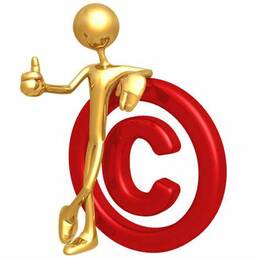 Fair use (aka fair dealing), for those who are unfamiliar with the term, is an exemption from copyright law which means that authors can use extracts of other people’s work in critiques, reviews and quotes etc. There are also further exemptions from copyright law for the purpose of parody, satire and in teaching materials, but let’s not get into those here. So, back to the original purpose of my blog: do authors have to be fearful of the ability of AI to write books? The short answer is yes. If not now, then in the near future. We know it is possible and therefore it is another form of competition in an already crowded market.  We know that it is possible to identify work written by some older versions of AI programmes. But how many readers are going to bother doing that sort of analysis if the retailer hasn’t done it for them? Quality isn’t a threshold for some readers. We already know this because some pretty poor books have become bestsellers. All we can do is maintain our own high standards of quality in the hope that readers will continue to buy our books. I think that the authors at greatest risk are those who are signed to "pulp fiction" publishers for whom quantity takes precedence over quality. If quality isn’t the overriding criteria for publication, those authors are at the greatest risk of losing their publishing contracts. But the one thing we know about computer software is that it gets better and better over time. The disadvantages that AI has at the moment will be addressed.  The illogical plot twists will be eradicated by teaching the systems what a logical plot twist looks like. The overall quality of the “writing” will be improved. The risk of plagiarism will be programmed out. So, if you are an author who is just dipping your toe in the water you shouldn’t plan on having a long career. You certainly shouldn’t be planning on making a lot of money from your work because increased competition squeezes everyone. But it is the text editors, proofreaders and cover designers who probably have the most to fear in the short term. AI can eradicate errors from documents, so there is less work for them to do and AI can design covers that are indistinguishable from human created ones.. But we at Selfishgenie promise not to publish any AI books knowingly. The trouble is, they will get harder to identify, so we may do it inadvertently, because it will be the human behind the AI written book that will sign the contract. But we will work on our “due diligence” to try to address that.  Are there any rays of hope for the Indie author when it comes to AI? I think there are. At the basic level, AI is a computer programme and therefore if you ask it to do something it will always do it the same way because it knows no other way. That is going to lead to a lot of similarity in books written by AI systems. Let me give you an example. Take the phrase “Sunlight dappled the meadow and the gentle breeze caused the heads of the wildflowers to dance.”. If I asked each of you reading this blog to input that into an AI writing system, what would come out the other end would be a lot of stories that are a variation on that theme, all of which would be very similar. If, however, I asked each of you to continue writing from that quote, without using AI, what I would get back would be lots and lots of different stories. That is because you will each interpret the quote in a different way and then you will use your creative abilities to come up with something that is original. Whereas AI draws its knowledge from what is already out there in the world. In other words, it learns from what has gone before. It doesn’t have original ideas, the way people do. If you are one of those authors who believes that readers want "more of the same" and therefore write books imitating (but not copying) other authors, then you may need to re-think your strategy, because AI can give readers that. But if you are an author who takes pride in being original, there is some hope for you because Ai isn't big on originality. The second ray of light is in marketing. AI book writing systems don’t do marketing. As Indie authors, we all know that marketing our books is very often harder than writing them. But the sort of people who will use AI to write books don’t want to do hard work. If they did, they’d be proper authors like us. Which means that they won’t want to do the marketing either and if you don’t market a book, it won’t sell. The only way to get anyone’s attention would be to sell the book for 99p so it turns up amongst the special offers, and there’s no money in that, so it wouldn’t be attractive to the person who is trying to make money by using a computer to write the books. It will take those people time to learn that, but that's their problem, not ours. The main threat here would seem to be the person who knows a lot about marketing but doesn’t know much about writing books. They would be prepared to do the marketing work required to sell an AI written book. But lazy people are no threat, with or without AI. If you have enjoyed this blog, or found it informative, then make sure you don’t miss future editions. Just click on the button below to sign up for our newsletter. We’ll even send you a free ebook for doing so.
0 Comments
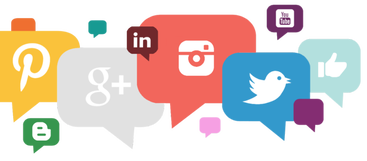 Once again I owe the inspiration for this blog to social media, which is ironic because it relates to the effectiveness of social media as a marketing tool. In this case, I read a Tweet from an author listing all the social media channels to which he subscribed, plus his blog, and bemoaning the fact that they weren’t generating much in the way of sales. I took a quick look at his Twitter feed and spotted at once what the problem was: a lack of engagement. 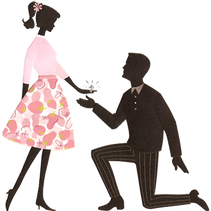 No, not that sort of engagement! No, not that sort of engagement! He had made a few re-tweets and posted a few “fake engagement” type posts (I’ll be returning to that shortly), but there was nothing on his feed that would encourage me, as a reader, to check out his work. So, it was unsurprising that despite all the channels he was trying to use, he was getting little return. Many authors see social media as a way of plugging their books and no more. That is where they go wrong. Yes, you may generate a few sales by metaphorically saying “Buy my book”, but it is just as likely that readers will scroll past and read a Tweet that isn’t trying to sell them something.  Even if they are interested in the book, they have to click away from the social media channel to check it out, and that interrupts their social media experience, so the best that can be hoped for is that they check it out later. That rarely happens because, by that time, the post has been lost amongst the thousands of others that have since appeared on the timeline. But if social media is so poor when it comes to selling books, why do so many social media gurus still champion it? Because social media is a useful tool – but you have to use it the right way. All tools have to be used correctly if they are to provide you with the right results and social media is no different in that respect. 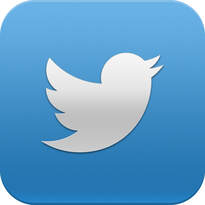 I’ll be using Twitter as my demonstration model, but the same problems apply with most social media channels. So, what do people do wrong? The most common mistake is “fake engagement”. This produces them lots of nice engagement data but doesn’t produce the desired results. In other words, it looks like it is working if you check the number of responses that a post got, but it doesn’t actually sell any books. So, what is “fake engagement”? Well, let’s start with what I mean by engagement. Engagement is supposed to be a conversation, which builds up a relationship, which then leads on to curiosity about the author’s work.  If the approach used generates responses but without that conversation emerging, then it is fake engagement, because it is one sided. It comes in many forms, but these are the most common: “Can anyone see my Tweets?” There are variations on that question, but the basic idea is that the viewer responds with a “yes, I can” answer, which appears in the Twitter analytics as engagement. But it is one sided engagement as no conversation emerges from it. 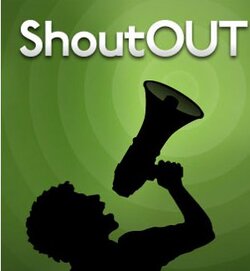 The “Writer’s boost” or “author boost”. This is the one I hate the most, because it uses the desperation of other authors to create the fake engagement. I don’t know of any author who has ever made a sale through responding to that sort of invitation (please comment below if you have). It comes in many forms, including posting links to books or blogs or posting cover images. A variation is asking authors to post the first line of their book or from a chapter, or to say something about a character. The inference is that the curiosity of readers will be excited and they will want to know more, but as the post is appealing to authors, not readers, there is little likelihood of that happening. (yes, I know authors are readers too, but in this instance they are responding as authors, not looking for their next new read). These types of post generate a lot of responses from authors, often several hundred but, again, it doesn’t create actual engagement. There are variations on this approach, such as asking people to recommend books. It usually starts with the poster suggesting they suddenly have some spare cash to spend and they want to spend it on books. 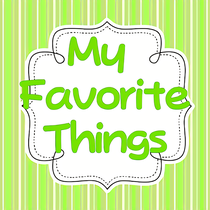 “Who/what is your favourite ….?” There is a natural impulse to respond to those sorts of Tweets, but I would advise against it. In its most harmless form, answering the question is just another form of fake engagement. However, it can also be a form of data gathering. Don’t be surprised if you see a sudden surge in advertising on your timeline related to products associated (however tangentially) with your answer. Some dialogues do emerge from those sorts of questions, but they tend to be between other responders, not with the person who asked the question in the first place. That data also appears in their engagement statistics. The questions take many forms. Another variation is “What goes on first, the peanut butter or the jelly?”, or “What goes with peanut butter (you can’t say jelly)?” The British version of that is “Jam or cream?” (Brits will know what that is about) but it’s still fake. 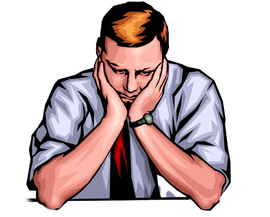 “I’m having a bad day.” Yes, I know that there are sometimes people on social media who are genuinely having a bad day. But that only makes this sort of fake engagement worse, because it is the very worst form of manipulation. They may look like they are saying “Feel sorry for me; sympathise with me; send me pictures of kittens or puppies”, but all of these are fake engagement. It boosts their engagement numbers and makes their feed look popular, but they don’t actually engage with anyone. And without that engagement, they will never sell any books. And they certainly won’t buy any of your books if you respond.  Surveys If you want to boost your engagement stats, post a survey. People love them. But they aren’t real engagement. I could keep adding to this list, but I’m sure you get the idea by now that fake engagement is about getting people to respond to a post, not about actually taking an interest in anything the responders have to say. So, what is real engagement and how do you use it to sell books? 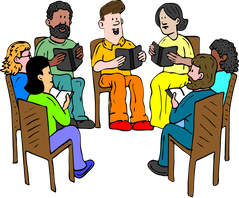 Find the real readers. Find the real readers. First of all, you have to search out and engage with readers, not with other authors. If you are an author, you are trying to attract new readers. That means talking to readers about books.. If you are a sci-fi author, you need to talk to sci-fi readers. If you are a romance author, you need to talk to romance readers, etc etc. How does that sell books? It doesn’t. At least, not directly. Social media isn’t a “direct” sales channel. You can’t draw a line between a post and a purchase. 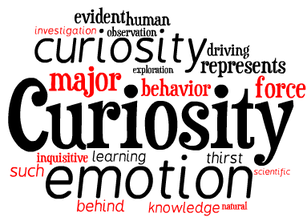 Social media has to be used to excite people’s curiosity about you and the way you do that is the same as you would in real life. You don’t walk up to someone in the street and say “buy my book”. So why would you think you can do that on Twitter, or Facebook, or Instagram? No, you engage people in conversation and the best form of conversation to engage them in is the thing they like to talk about the most – themselves. And, eventually, they feel obliged to ask “what about you?” At that point it is OK to mention your book – because they asked.  BTW, this is where a pinned post about your book is essential. Because they may not ask about you or your book, but they may go and take a closer look at your feed and that’s where they will see the post about your book, if you have pinned it. You still may not make a sale, but you may at least have captured their interest enough to take a look at your book. It is very much a “soft sell” approach, but it is more likely to be successful on social media than a hard sell. How do you identify readers? 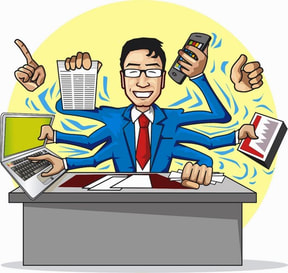 It isn’t easy, unless they have it in their biography or they mention it in their posts, but if you assume that everyone is a reader, then you won’t go far wrong. The worst that can happen is that you use social media for what it is meant to be used – for being sociable. Does that all sound like hard work? OK, who told you that it would be easy? Because if anyone did, they lied to you. As I have said in many previous blogs, there is nothing easy about marketing, and that includes social media marketing. Using social media as a tool to promote your work is hard and requires a lot of time and effort. But, done right, it can be effective. Done wrong and it gets you nothing, as the person who inspired this blog found out. If you have enjoyed this blog, or found it informative, then make sure you don’t miss future editions. Just click on the button below to sign up for our newsletter. We’ll even send you a free ebook for doing so.  In last week’s blog we focused on some of the positives of being an Indie author, so it is only fair that we now look at some of the negatives. But we here at Selfishgenie are positive sorts of people, so we really want to turn the negatives into positives too. It isn’t always possible, but we have racked our brains and we think we have found a few ways of doing that. We’re not going to go all “turn that frown upside down” cliché on you. But we do want you to know that there is nothing about the negatives of being an Indie author that you should ever feel you can’t do something about. So, here we go with the negatives of being an Indie author.  1. You have to edit your own work. Some people love editing, some people hate it. But it is an essential part of being an author. If you want your book to be the best version of itself that it can be, you are going to have to do some editing, because the first draft of any novel is never going to be perfect. The first step to editing your draft is to put it out to beta readers. Many Indie authors think this is the final step because they want approval for their finished product. It must therefore be quite demoralising when their beta readers tell them that the book still needs work. So, go to the beta readers first, get their feedback, fix what needs fixing, then go back to a different set of beta readers for a fresh perspective. The feedback should be less damning and more complimentary, but you can still expect some suggestions for improvement. Rinse and repeat until the beta readers have no more suggestions for improvement, or until you think the suggestions are no more than nit-picking. There is no point in putting a book out there and hoping it is good enough. This process provides a degree of certainty. If all else fails, you can find editors on-line and pay them to edit your book. Be very sure of what you are paying for, however. Particularly make sure you understand the difference between editing the text and editing the narrative.  2. You have to do your own formatting. True, but if you set up a template so that from the first word of your book it is already formatted correctly, you will save yourself a lot of time. You may want two formats, a draft version that’s double spaced for later editing, and a final version, but word processing packages allow for speedy conversion from one to the other. We encourage authors to compose in the final format, because we edit using word processors too, which means double spacing isn’t required. We even publish a formatting guide so that potential authors can impress us by showing that they have researched us and know what we are looking for from them. There really is no witchcraft to formatting:
These aren’t hard and fast rules but take a look at the books you love the most and see how they are formatted. Copy them and you won’t go far wrong.  3. You have to upload your books onto self-publishing sites yourself. This can be time consuming the first time you have to do it, but after that you can upload an ebook and a paperback in less than an hour. Some sites are more difficult to work with than others, but if you do anything they don’t like they will tell you why, so you can correct it before publication. If you get the formatting right in the first place, the problems will be reduced. Covers are most tricky, especially for paperbacks, because they have to take into account the thickness of the book when it has been printed. Investing in a package such as Book Brush and learning how to use it is well worth the money and the time. 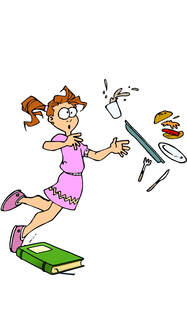 4. You have to market the book yourself. There can be no doubt that this is the hardest part of self-publishing, and it is also the part that Indie authors spend the least time and money on. Sorry, but if you think people are going to stumble across your book by accident, you are fooling yourself. If you think that “word of mouth” will sell your book, you are fooling yourself. If you think that plugging your book on social media will sell your book, you are fooling yourself. Yes, both word of mouth and social media have a part to play in book marketing, but it isn’t as big a part as some people make out. Book marketing requires knowledge of how to do it if it is going to work. Unless you want to spend money getting other people to do it, it is far better to spend money on learning to do it for yourself. Actually, you don’t have to spend money on learning. There are free on-line courses on marketing that will teach you the basics. But you have to invest the time and the effort if you want it to work. Investment in yourself is an investment that always pays back – so do it. But at some point you will have to pay for marketing services, especially advertising. We have posted several blogs on this subject and you can find them all in our archive. But the golden rule is caveat emptor – buyer beware. There are lots of “businesses” out there that promise a lot but deliver little. Look for recommendations from other authors and check their sales rankings - because they don't lie. That’s one of the best ways you can use social media when it comes to marketing. 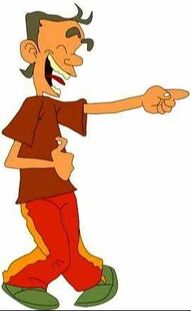 5. Readers don’t take self-published authors seriously. Unfortunately, there is little we can do about that sort of prejudice. Also unfortunately, there are a lot of poorly written self-published books that would seem to confirm this bias (though not yours, obvs). There are a couple of things you can do to try to change the minds of readers when you encounter this bias. The first thing to do is to challenge this view. There are a limited number of agents and an even more limited number of publishers, so author supply outstrips publisher demand. Just because an author can’t find a publisher it doesn’t mean their book isn’t worthy. It just means there is no space for them at the table right now. The other thing you can do is to point out the growing list of bestselling self-published authors. We gave some names in last week’s blog, so you can scroll down and see them. Saying something like “How do you account for the success of L J Ross, who is self-published and has sold over 7 million books?” will leave the prejudiced person looking for a way out of the conversation. If they reply with “they got lucky” then start reeling off a few more names and asking if they all “got lucky”. Or maybe they sell so many books because they are real authors who tell stories that people want to read. I can’t promise that you will change a lot of minds, but it is only by challenging prejudices that we eventually eradicate them. If all else fails, offer them a free copy of your book so they judge you on merit instead of pre-judging you.  6. You feel so isolated and/or you feel like an imposter. Having a publisher comes with a support network that affirms your ability as a writer. And there is always someone available at the end of a telephone who understands what you are going through and is there with words or comfort. But just because you are self-published, it doesn’t mean you are alone. Join a writer’s group. Even if you live in an isolated community you can join virtually. Zoom has become a great boon when it comes to meeting other writers and discussing your problems with them – and being there for them to discuss their problems with you. Join on-line writers forums, for the same reason – but don’t try to use them to plug your books! I don’t recommend social media as your first port of call for support. While the vast majority of authors on it are supportive, it only needs one troll to start on you and it can ruin your day. Find the safe spaces and stick to them. But always remember – you are not alone. If the worst comes to the worst, you can always email us, even if you aren’t one of our authors. We support every Indie author, regardless. See our “contact” page for our email address. If you have enjoyed this blog, or found it informative, then make sure you don’t miss future editions. Just click on the button below to sign up for our newsletter. We’ll even send you a free ebook for doing so. 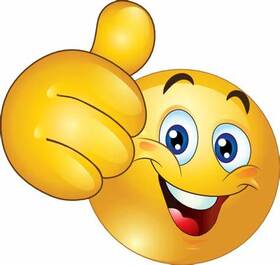 For this week’s blog I’d like to spend some time looking at the upsides of being an Indie author, of which there are far more than you may think. As Indies, we are all aware of the downsides. I may devote a blog to them in the future, but this week I’m trying to stay positive, so I won’t be mentioning them other than to acknowledge that they exist. But those negatives colour our thinking about who we are, what we are and what we are capable of achieving if we do a bit of research and are prepared to knuckle down and do the work. I’m not talking about the work of writing a novel. You have already done that, or you wouldn’t be thinking about publishing.  No, I’m talking about the work of being a self-publisher. It is a job in itself and it requires all the disciplines of any other type of job if you want to succeed. There is no nepotism in self-publishing, because there is no daddy (or mummy) figure to help you up the ladder. There is just you. If you aren’t prepared to put in the work, there is no point in reading blogs (or books) about self-publishing because you won’t make it. There is no such thing as “luck” when it comes to selling books (there is no such thing as luck anyway, IMHO). There is only hard work and dedication. Just like any other job, you either have to put in the hard yards, or you have to sleep with the boss, which is a bit difficult if you are the boss. So, what are these upsides? 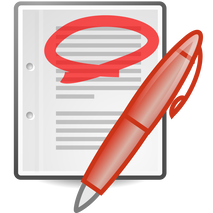 1. You have complete editorial control. Any editor working for a publisher is expected to produce a sure fire winner at the end of the editorial process. That means that if they don’t like the way you tell your story, they will want you to change it. But think about that for a moment. Your book is like your child. Would you change your child if a complete stranger told you it was ugly? No, of course you wouldn’t. The same applies to your book. You don’t have to change it if you don’t want to. There is a caveat to that. If your beta readers (you do have beta readers, don’t you?) tell you your story is ugly, it is worth listening to them. But you are still in control of how your story is told.  2. You can get your book to market far quicker. There is no doubt that mainstream publishing is a slow process. From acceptance of a submission to launch date of the book can be as much as two years, depending on the publisher. There are many reasons for this, but the main one is all the boxes that have to be ticked on the Gantt chart to get it to publication day. But for the Indie, once they have decided that the latest draft is as good as the book is ever going to get, they can launch their book the same day, if they put their mind to it. Realistically I would suggest a two to three week timeline, especially if you need a cover to be designed, but the timeline is entirely in your hands.  3. The Indie can set their own price for the book. That means the Indie can get very competitive in their pricing. Not for them the £19.99 (or more) hard backs, followed by the £13.99 paperback and the £9.99 ebook.. Indies don’t have to have a hard copy version at all if they don’t want to – though there is still a large market for paperbacks. Competitive pricing allows a lot of Indie authors to establish a readership amongst people who don’t have much of a budget for books. That earns them reviews and that in turn stimulates more sales. And without all the overheads of a big publishing house, the Indie can actually earn larger royalties per book than many mainstream published authors. Some of our authors are now earning 4 digit royalties per month and that’s after we at Selfishgenie take our share. While we may not be true Indies, we operate on the same cost base as an Indie which means our authors’ earnings are comparable to those of any Indie author who does it all themselves.*  4. The Indie can control their own marketing. If book sales are flagging, the Indie can give them a boost by running promotions and advertising campaigns. Most mainstream publishers lose interest in a book after about 12 months, because they have moved on to new projects, leaving their authors languishing in the doldrums with ever decreasing sales. Mainstream Publishers will deny that, of course, but think about it for a moment. How often do you see “sponsored ads” on Amazon for a mainstream published book that is more than a year old? I’ll give you a clue – you won’t. Book stores have removed the book from the shelf to make room for new releases. The mainstream publishers rely on Amazon’s algorithms to keep their back catalogue in front of readers, based on reading preferences and previous purchases. But if the Indie’s books sell a few copies, they will appear in front of readers in exactly the same way, because the algorithms work for the Indie just the same way as they work for mainstream publishers. A mainstream published author can’t tell their publisher to do more marketing, but an Indie can do it for themselves. 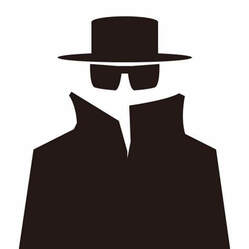 5. You don’t have to pay an agent. Agents are only necessary to open the door to a mainstream publishing deal. But they want a big share of your royalties for doing that. It used to be around 10%. Now it is closer to 20% and can be higher for the most successful agents. And it comes from the author’s royalties. The publisher doesn’t pay the agent a penny. I’m not saying agents don’t earn their money, but I would prefer to see a ceiling placed on their earnings from a book, rather than it being a lifetime commitment. We’re talking about a business relationship here, not a marriage!  6. You get all the credit. If your Indie book is a success, no one else can claim the credit. No agent can say “I discovered that author”. No editor can say “I made that book what it is”. No publisher can say “Without me, you would never have heard of this author”. And there are a lot of highly successful Indie authors who can make their claims for success. Here are a few names: L J Ross, Mark Dawson, Rapi Kaur, Rachel Abbott, Phillip Goodrich, Christopher Paolini, Maria E Cantu Alegre and Howard of Warwick (pen name), Between them those Indies have sold millions of copies of their books – for L J Ross alone it is 7 million. BTW, while researching that list I actually bought one of the author's books, because I read the genre in which the author writes and had never come across him before. I was already familiar with Mark Dawson, because I have read several of his books. I’m not going to pretend that being an Indie author is easy. If it was, that list of successful Indie authors would be a lot longer (actually, it is. I just stopped after 8 names because I had no more time for research). But my point is that if you are an Indie, it doesn’t mean you can’t become a big name. If you have the right book and you market it the right way, it will sell. So, all you Indies that have read this far, give yourself a big pat on the back and, the next time you are feeling frustrated about not being signed by a big publishing house, remember this list of upsides. Success really is within your reach. You just have to grasp it. I have only listed 6 positives, but that is because I don’t have time to write about more (I do have a business to run too). Please feel free to share your positives in our comments section below. * If you want to be part of this success story, you can find out how on our “Contacts” page. If you have enjoyed this blog, or found it informative, then make sure you don’t miss future editions. Just click on the button below to sign up for our newsletter. We’ll even send you a free ebook for doing so.  What does it mean when an author puts “No 1 bestselling author” or “No 1 bestselling book” in their social media profile? That is a hard question to answer. Were they, even for a short time, the bestselling author in the world? That’s hard to say unless you search the bestsellers listings on a regular basis. Maybe they were, maybe they weren’t. Were they the bestselling author in their country? Same answer. Were they the bestselling author in their genre? Same answer. You see the problem we have here. They may be telling the truth, they may be telling a lie, or they may be telling the truth, but not the whole truth.  I’m referring here to the Amazon bestsellers lists, because the newspaper and literary magazine listings have very strict criteria for getting onto their lists. They are based on global or national sales for the week, month or year and the figures are provided by the retail outlets, not by the publishers or authors. That makes it more difficult for the figures to be inflated (ie lied about). For the Sunday Times or Guardian bestsellers lists for the year, for example, you would need to sell in the region of a 100,000 copies of your book in all formats just to get into 100th place. If you ever make the dizzy heights of being No 1 on those lists, no one will doubt your right to call yourself “bestselling”.. For a start, lots of readers will have heard of your name and the title of your book by then, because you will have been all over the retail outlets, both the physical shops and on-line. 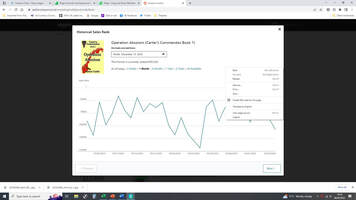 But on Amazon, for some sub-genres, you could get to No 1 spot with just a single sale. Even to get to the No 1 slot in one of the top level genres, you could make it with just a few hundred sales. We used Publisher Rocket’s “category search” function and discovered that in the Books>Science Fiction and Fantasy category you can make the No 1 slot with only 335 copies sold. You would have to sell them over a short space of time, no more than a day probably, but that is doable if the book is a good one. OK, that may only be for a few hours, or for a few days, but you’re up there and you can screenshot it to provide evidence of your claim. Which is where telling the truth, but not the whole truth, comes into the equation. 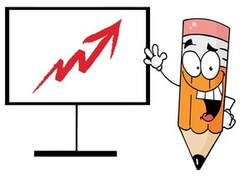 An author can claim to be No 1, but they don’t have to say for how long they were No1, or in what category and/or sub-category they were in. Because, on Amazon, you can choose your own categories and Amazon won’t question it. You can list your book as Kindle Store > Books > Science Fiction & Fantasy > Fantasy > Christian Fantasy. You can then ask 5 family members or friends to buy a copy of your own book (you might even give the money so they don’t have to pay for it themselves) to send it to No 1 in that category, where it will stay until another book in the same category outsells it. Amazon won’t question that choice of category, so it won’t get rejected. And you don’t have to tell your followers on social media that you have only sold five copies when you put “No 1 bestselling author” (or book) in your profile.  Am I advising you, as a self-published author, to game the system by listing your books in obscure categories where you can make the No 1 slot with just one sale? No, I’m not. What I am advising you, as a reader, to beware of is that just because someone has made the claim, it doesn’t mean their book is actually a best seller in any real meaning of the expression, because the author may have gamed the system. We live in a world where deception is now seen as normal because people use the excuse “everyone does it”. Well, I’m here to tell you that not everyone does it, because we here at Selfishgenie Publishing don’t do it and we don’t allow our authors to do it either. It means that we will probably never be able to claim “best seller” status for any of our books, because although we sell quite a few books, we don’t sell 100,000 copies a year of any title. What can you do as a reader to make sure you aren’t fooled?  The answer is not to look at subgenres when looking at the sales rankings. Look only at the overall ranking and then the headline genre eg. Sci-fi and fantasy; thrillers, crime; Action & Adventure, Romance, etc. If a book is ranked overall in excess of 500,000 (10k in its genre) then it means it hasn’t sold very many copies and probably not sold any recently. If a book is between 500k and 100k (10k to 5k in its genre) it has sold a few copies and probably in recent months. If a book is between 100k and 50k ( 5k to 2k in its genre) it is selling more copies, and if it is better than 50k it is selling regularly. If a book is ranked better than 10k (2k in its genre) then it’s doing very well. And if it’s doing very well, there is probably a good reason for that which has nothing to do with the author’s claims for it. In other words, you can buy with some confidence that it is likely to be a good read.  Those numbers are just “ballpark” though. Because sales vary so much between genres, it is difficult to be too precise. It’s like comparing apples to elephants. A high volume genre such as Action & Adventure is going to require more sales to get it to the 10k ranking than a book in a lower volume genre, such as Horror. That is why the overall ranking and the genre ranking have to be viewed side by side. And that’s why looking at sub-genres can be so misleading. As I have pointed out, in some categories it is possible to be No 1 with just a few sales. If the author has a loving mother, father, spouse, siblings and few good friends to buy the book, it could get a pretty good sales ranking even if it is the worst book ever written. If you have enjoyed this blog, or found it informative, then make sure you don’t miss future editions. Just click on the button below to sign up for our newsletter. We’ll even send you a free ebook for doing so. 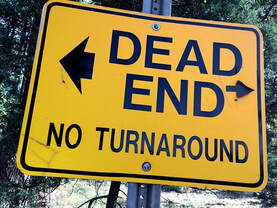 No Way Out! No Way Out! It is a common theme on social media, for authors to bemoan the fact that they have got their characters into a certain situation but can’t find a way out for them. I guess it is a sort of “writer’s block”, but it is one that is avoidable. Authors can be split into two broad types (at the risk of stereotyping); there are the “plotters” and there are the “pantsers”. 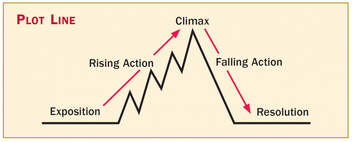 Plotters plan their book in advance, breaking it down to chapters, then scenes and even to paragraphs, depending on how focused they are on the fine detail. Some plotters spend far more time planning their books than they do actually writing them (OK, maybe an exaggeration, but they do spend a lot of time on planning). We are not here to talk about plotters. If you are one then move along, there is nothing for you to see here. (OK, stick around and read about how miserable things sometimes get for pansters if you want to). Pansters “fly by the seat of their pants”, hence the name. They sit down in front of their PC, laptop, tablet or phone (some even use a pencil and paper) and just start writing. They have no idea what is going to happen in their book until the words appear in front of them. 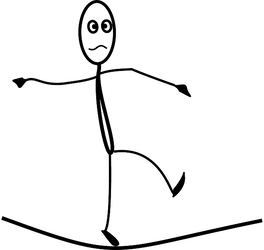 Life as a pantser! Life as a pantser! I am a pantser and proud of it. I think I’m more creative because of it. And yes, sometimes I get myself into a position where I don’t know what is going to happen next. But I have learnt from that, so it happens a lot more rarely than it used to. Which brings me to the subject of this week’s blog, which is how pantsers can save themselves a lot of anguish and a lot of time. I now have one simple rule that I live by when it comes to writing: never put your protagonist into a situation unless you know how you are going to get them out of it.  So, your protagonist gets into a fight and gets thrown down a well. Good bit of drama. No problem. But if you don’t know how they are going to get out, you could end up staring at that screen for a very long time. It could result in you going all the way back to before the fight started and re-writing the whole chapter so that this time they don’t get thrown down a well. Which means you lost a whole lot of time by not thinking about it first. So, here is a hypothetical scenario, as I would play it out in my head. Me. “I’m going to ramp up the action so that my protagonists is going to get into a fight.” Me in my head. “Good idea. How is it going to have a dramatic ending?” Me “He’s going to get thrown down a well, which is too deep for him to get out. And the antagonist then cuts the rope that’s attached to the bucket and throws it into the well with him, so he can’t climb up the rope.” Me in my head “Sounds good, but he’s eventually got to get out, so how will he escape?” Me, “Someone will come past, hear him calling for help and lower a rope down to him and haul him out.” 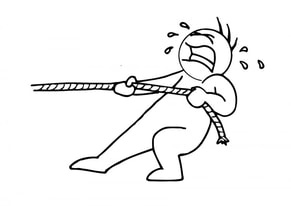 Now, you may think that’s good (or maybe you don’t). But is it believable? I mean, is it normal for people to just wander past carrying a bit of rope long enough to reach the bottom of a well? Yes, we expect our readers to suspend their disbelief, but we can’t expect them to believe in miracles (unless it’s a religious story, of course, where miracles are a routine explanation for everything). So, I now have to think about how this person is going to turn up out of the blue, carrying the rope. Me in my head “Where did this bloke come from and why is he carrying a rope?” Me (after a lot of head scratching) “He’s a bellringer in the local church and he has to replace the rope on one of the bells. He is just on his way to do that when he heard my protagonist calling for help.” Me in my head. “OK, that’s believable. Go for it.” It may be necessary to go back a few pages, or even a few chapters, to introduce the bell ringer, to add credibility to the plot. Maybe we’ll see him with his wife (it has to be a he so he is strong enough to haul a fully grown man out of a well), having breakfast and discussing what he is going to do that day, then we follow him on his walk to the church, which takes him past the well. 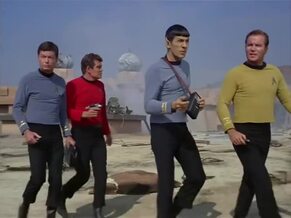 Guess which character is going to die! Guess which character is going to die! But that is easier to do than going back to square one because I haven’t given the matter any prior thought. If you are a pantser and all that sounds like a bit of a chore, then OK. It’s your story, write it your way. All I’m saying is that you can make life easier on yourself by not going hell-for-leather all the time. Just stop and think about what will happen next, especially when it comes to putting your protagonists in the way of danger. And if you think all the above doesn’t apply to you because you write romance, or another genre that doesn’t involve throwing characters down a well, think again! You will be putting your characters into unsuitable relationships from which you then have to extricate them. That is a metaphorical well. Some types of book make it easier to find additional characters at the right time than others. I’ll use a well known TV series to illustrate. In the original Star Trek series, we only saw a small number of crew members. But there was apparently a crew of 430. That made it easy to introduce a new face when it was needed. I’m sure we can all recall episodes where a previously unknown crew member joined a landing party, only to die almost as soon as they were transported to the planet’s surface. But that minor character was important, because his death (it was nearly always a man) alerted the rest of the landing party to danger and ratcheted up the drama levels.  Other settings allow this as well. Basically, any plot that is set in a large organisation: hospital, military, school, police, FBI, CIA et al provides scope to introduce minor characters when they are needed. When writing a book with a smaller, tighter setting, it is much harder to introduce a new character. For example, in Robinson Crusoe, Daniel Defoe has to concoct a plot about cannibals coming to his island to kill and eat the character who would become Friday. When reading that as a child, I found it hard to believe. I mean, why would cannibals transport a prisoner across miles of dangerous ocean (Crusoe’s ship had already been sunk in a storm to leave him stranded) , when they could do what they wanted to much closer to where they captured him. Indeed, they could even do it at home. Credibility is important when introducing characters, especially if they have an important part to play in the plot, even if they’re only going to be in the book for a short segment..  Beware of remote locations Beware of remote locations So, that is something for you to think about if you are setting your story in a remote location, because drama means threat and threats have to be countered and the protagonist may not be able to counter the threat without help. In the film The Revenant (2015) the protagonist, Hugh Glass (Leonardo DiCaprio), teams up with a native American who saves his life when he becomes feverish, so this is a common trope and one that must be planned in advance. Even if it is only 30 seconds in advance. Finally, a word on the use of magic to solve your protagonist’s problems, for you pansters who write fantasy. I include miracles in that as well, even though writers of religious books wouldn’t consider them to be magical. However, the same problem exists.  If the only way out of their predicament for your protagonist is to use magic, then it’s bad idea. If magic is always going to be the solution, there is no point in reading the book. There is no drama for the reader if they know that no matter what happens, the protagonist is always going to be saved by magic. Magic has its place in fantasy, but only when magic is being used against it. Even then it should come at a cost to whoever is using it, so that further use is discouraged. Even Shakespeare, who occasionally used a bit of magic, knew to use it sparingly. OK pansters, lesson over. And all you plotters can now stop gloating and get back to your flow charts. If you have enjoyed this blog, or found it informative, then make sure you don’t miss future editions. Just click on the button below to sign up for our newsletter. We’ll even send you a free ebook for doing so. 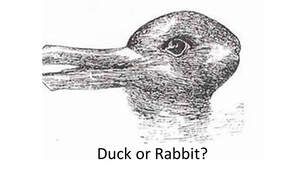 Once again I’m indebted to the users of Twitter for the inspiration behind this week’s blog. The theme is how perceptions don’t necessarily match up to reality. The Tweet(s) in question relate to an author bemoaning the fact that someone had posted rude 1 star reviews about two of her books on Amazon and she feared this was impacting on her sales. They were also undermining her confidence and making her ask herself if she should continue working on her third book. I Tweeted back (sympathetically I hope) that reviews weren’t everything and, at the end of the day they are an opinion, and no author can please everyone. If they had valid criticisms, then it was a good idea to learn from them, but otherwise forget them. There are also people who delight in posting 1 star reviews, just because they can. (I know, we live in a truly troubling world) 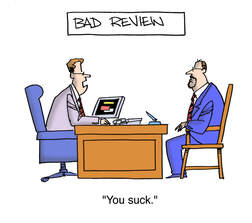 In her reply the author posted a screenshot of her review data, the yellow bars Amazon uses to show the percentages of reviews for each star rating. And it was highly revealing, but not in the way she thought. Out of around 240 reviews, over 60% were 5 star and another 20% were 4 star. I pointed that out, suggesting the (approx) 10% of 1 star reviews weren’t something to worry about. The number of 4 and 5 star reviews would be far more influential than the 1 star ones when it came to decisions about purchasing. She didn’t agree with me, suggesting that her KENP reads had dropped since the 1 star reviews had been posted. I suggested that she would need a bit more evidence than that in order to draw such a conclusion. Perhaps her KENP reads had dropped because her marketing activity needed refreshing. I think I may have persuaded her, because she did say she would think about that. Or maybe she was just trying to shut me up, which is a real possibility. 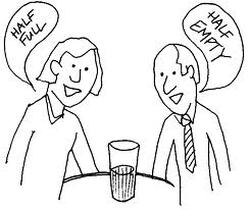 But it is easy to take an isolated bit of data, such as reviews, and interpret them as something they aren’t. Looking at her numbers, I would be using the percentage of 4 and 5 star reviews to trumpet the success of our books, in order to encourage new readers to try them. That screenshot she posted tells a far different story to the one she was seeing, as far as I was concerned. Because 80% reviews at that 4 and 5 star level are a real sign of success, not failure. It is always dangerous to take two bits of data, put them side by side and assign cause and effect from them. In this case a couple of 1 star reviews put alongside a drop in KENP reads equals a cause and effect. 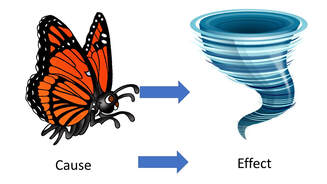 Cause and effect? Cause and effect? A third bit of data is needed in order to see if that is a valid conclusion. In this case the third bit of data would be a measurement of marketing activity: social media posts, advertising spend etc. If there is a lot of marketing activity but a drop in KENP reads, then the author may be right in her original conclusion. But if there is a drop in marketing activity at the same time as a drop in KENP reads, then perhaps it isn’t the 1 star reviews that are the cause, perhaps it is the lack of marketing. It is very easy to let our perceptions and emotions get in the way of interpreting our data. In this case it is possible that the author is (a) underconfident and (b) sensitive to criticism. I can’t prove that because I haven’t got all the data available, but it seems to be a reasonable conclusion to draw on the basis of what she said in her Tweets. 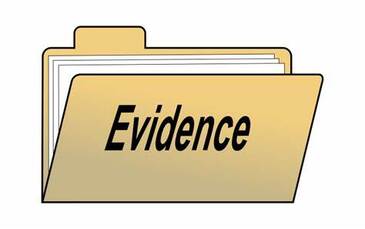 That under confidence, combined with the sensitivity, led the author to draw a conclusion that supported her perceptions and, despite what Lee Atwater may have said, perception is not reality, it is only the perceiver’s reality. Perception may be reality, but it isn’t actuality (Bill Cowher) and you have to be able to tell the difference if you want to market your books effectively. In this case it was the perception that 1 star reviews were affecting KENP reads, when the actuality might be a lack of marketing or perhaps another, undiscovered, reason. As statisticians will tell you, correlation does not imply causation. More evidence is needed. So, if you want to diagnose problems such as drops in sales levels, what can you do? 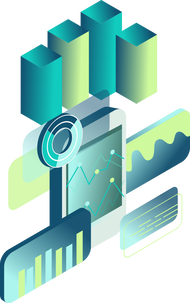 The best thing is to use several different types of data alongside each other and see what, together, they are telling you. KDP provides you with a lot of information on sales and KENP, but it doesn’t tell you anything about your marketing activity. This means that you need to have some measurement of marketing activity that you can analyse. If you use paid advertising, there is a mountain of data that can be obtained in relation to the performance of your ads. The most important bits are conversion rates. Eg how many impressions (views) did your ads get and how many clicks on the links did that convert to. Then how many of those clicks were converted to sales. The experts suggest you should be expecting at least a 10% conversion rate of link clicks to sales to consider an advertising campaign to be successful. But if you don’t use paid for advertising, you only use social media, you have to look elsewhere for your data. But the same principles apply. How much engagement did you get for the social media posts that pitched your books? How many clicks on the links etc.  The lower the numbers are, the less likely it is that you made sales or KENP reads. If you got high engagement levels but low sales, it means that readers looked at your book but chose not to buy it and there are many reasons why that may be. Reviews are one of them, of course, but they aren’t the only one. There is your cover, the blurb and the ‘look inside’ portion of the book as well. I would say that all three of those are a more likely reason for a reader not buying than having 10% 1 star reviews when 80% are 4 and 5 star. I’m not saying reviews aren’t important. Readers often send us important information tucked away in a poor review and that information can be used to improve writing. But, as I said before, a review is just an opinion and, in some cases, it isn’t even that. It may just be some poor soul being nasty because it makes them feel good. And that contaminates the data, just as an author getting their Mum to post 5 star review contaminates the data. But importantly, don’t let perception become your reality if you aren’t sure it is also the actuality. Correlation isn’t the same as causation (well, sometimes it is but that is a whole different blog). If you have enjoyed this blog, or found it informative, then make sure you don’t miss future editions. Just click on the button below to sign up for our newsletter. We’ll even send you a free ebook for doing so.  I think it is fair to say we get a lot of our ideas for blogs from Twitter and other social media sites, especially those used by authors. Be careful what you post, because you might well get a mention here. Not by name, of course. We would never do that. So it is this week, with a Tweet we saw a few weeks ago from an author (we sometimes write our blogs several weeks in advance of their publication). The Tweet was actually in two parts. The first part related to the way an author’s book sales had fallen off over recent weeks. By ‘sales’ we also mean KENP read using KindleUnlimited etc. A blog we posted a couple of weeks ago covered some of the reasons why sales vary on a seasonal basis, so we won’t cover that ground again (scroll down a bit if you want to find out more). But, of course, it’s not just the season of the year that affects sales. 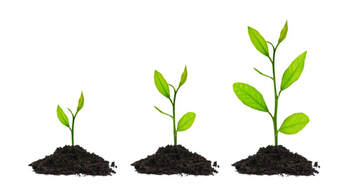 We like to think of book sales a little bit like the way we think about tending houseplants. If you give a houseplant just the right amount of attention at just the right time, it should flourish. Well, a healthy plant in a disease free environment should live a long and happy life if it is given the right care and attention. But if you don’t give the plant the right care, or enough attention, or you give it at the wrong time, it will die. The same applies to giving it too much attention. The phrase ‘killing with kindness’ may have been invented for houseplants (if it wasn’t, please don’t email to tell us – put it in a blog of your own).  So it is with marketing a book. Given the right attention at the right time, your books should still sell even if seasonal factors are against you. That’s providing they are readable, of course – it’s hard to sell a poor quality book, ie one that has a ‘disease’. If you don’t do enough marketing or you do it at the wrong time or in the wrong way, your books won’t sell. And you can do too much marketing, killing the book with kindness so to speak, because readers get fed up with seeing your marketing efforts. Our response to the Tweet we saw was to suggest the author think about taking a look at her marketing strategy to decide what might be needed to lift her sales. The second part of the Tweet was about the author’s fixation with checking her sales data on KDP. She seemed to be looking very five minutes (I may be exaggerating) but she knew it wasn’t healthy.  For Indie authors I can quite understand the need to constantly check sales data. Sales provide validation for the author that their book is ‘good enough’. An author who has an agent or a mainstream publisher doesn’t need that sort of validation. They have already had their fix by getting the agent and/or the publishing deal. But for Indies there is little other than sales data to tell them that readers like their books. Reviews are the other form of validation, of course, but they are opinion based and therefore subjective, whereas sales data is empirical. Numbers don’t have an opinion. To paraphrase an old business saying: reviews are vanity, sales are sanity. 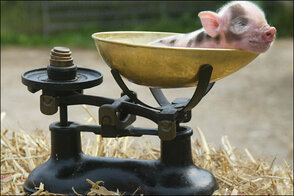 You don't fatten a pig by weighing it. You don't fatten a pig by weighing it. But you don’t fatten a pig by weighing it, as the saying goes (apologies to vegans, Jews and Muslims). Weighing your pig tells you if it’s gaining weight, but if you aren’t using that information to adjust your pig’s diet, then knowing its weight doesn’t achieve anything. OK, it’s a heavy handed metaphor (it was a heavy pig) but it makes the point. Knowing your sales data doesn’t sell more books. Knowing your sales data tells you whether or not your marketing strategy is working. If you aren’t making sales, or not as many sales as you think you should be making, then that is telling you to look at your marketing strategy so you can change it to make more sales. But if you make changes to your strategy, you have to give them time to work. Checking the figures every five minutes doesn’t help. It may just lead to frustration and, in extreme cases, it may actually be harmful to mental health.  By marketing strategy, we don’t just mean your advertising or social media posts. Book covers and blurbs can both have an effect on sales and need to be quality checked to make sure they are doing their jobs. The “look inside” feature on Amazon is also part of your marketing. If you don’t capture the reader’s imagination in those few free pages, you may not make the sale. The way you word your social media posts, what sort of images you use and a whole raft of other considerations also play their parts. We blogged about all of that last autumn, so we won’t go into those again today. If you want to know more, check out our archives under the "marketing" heading. So, Indie Author who inspired this blog, we hope we have reassured you that checking your sales data is actually quite normal. But we hope we have also encouraged you to take the information provided by that data and make use of it, so that your sales will look after themselves and you don’t have to check them so often. If you have enjoyed this blog, or found it informative, then make sure you don’t miss future editions. Just click on the button below to sign up for our newsletter. We’ll even send you a free ebook for doing so.  Here at Selfishgenie we try not to mention politics or religion in our blogs. It’s not that we don’t have opinions on those subjects – we’re human (honest, we are) so of course we have opinions. No, it’s that if we express our opinions we are pretty sure that we will alienate a considerable number of our readers. It doesn’t matter which side of the discussion we are on, we are going to alienate the people who are on the other side. And that is bad for business. If we alienate people, they may decide that they want to punish us for our views by not buying the books we publish. 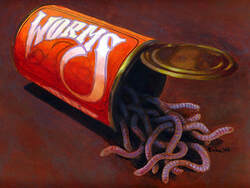 Are you opening a can of worms? Are you opening a can of worms? If they do that, however, they aren’t just punishing us, they punish our authors and that’s wrong, because those others don’t necessarily share our views. In fact, I know of a couple of our authors that have opposing views, but we manage to get along amicably anyway. So, the people that are trying to punish us actually end up punishing people who agree with them. It’s a strange world, isn’t it? But, of course, that brings into question how Indie authors handle politics and religion, and it can be very bad for sales. I include in this views on climate change, race, homosexuality, transexuals, conspiracy theories, vaxxing, and a wide range of other issues which have political or religious implications. 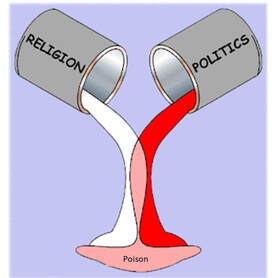 A poisonous mixture! A poisonous mixture! Every time we post something on social media, it tells the world a little bit about us. And some of the things we say have the power to alienate people. It doesn’t matter that they are our sincerely held beliefs. It doesn’t even matter that what we say may be true. All that matters really is that it has the power to affect book sales. I know there are authors who struggle with this. They have strong beliefs and they want to express them either to support or oppose whatever it is their beliefs are about. 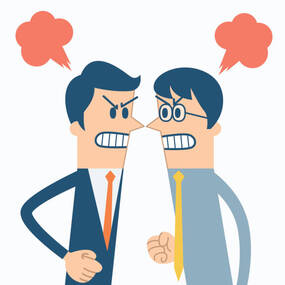 But some of the people who take an opposing view read those Tweets and think ‘I don’t agree with them, therefore I won’t enjoy their books if I bought them, so I won’t buy them’. It may be an absurd view, but that doesn’t stop people taking it. I once overheard someone say that if they had known that a certain author held certain political views, they would never have bought their books. The person they were talking to asked them if they had actually enjoyed the books, to which the first person replied that they had. You see how ironic that is? Even though they had enjoyed the books, they wouldn’t have bought them if they’d known the political views of the author. Absurdity in the extreme. But I’m pretty sure that person isn’t an isolated example.  Then there are the political “discussions” people get embroiled in. Some of them get quite heated; insults get thrown around and generally the people involved never come out of it looking good, no matter how valid their arguments. Again, if one of the participants is an author, it won’t help their brand image. No one knows how many people are viewing those social media arguments and taking note of what is being said, so the people involved never know how much harm they are doing to their “brand”. And, of course, it is there forever. Even if it is deleted by one of the parties, it can still be found on a server somewhere. 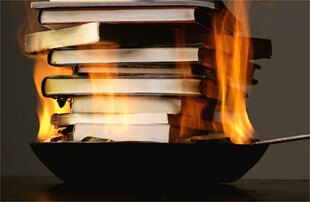 Some people would rather burn books than read them - even yours. Some people would rather burn books than read them - even yours. The other side of this coin is the expression of political or religious views in books. There are times when that is appropriate for those to be featured in novels, of course, but there are times when it isn’t. It is possible for some books to use sensitive subjects and become bestsellers, such as “To Kill A Mockingbird” and “Last Exit To Brooklyn”. However, it isn’t possible to know in advance how books featuring these topics will be received and for every Booker/Pulitzer prize winning bestseller there are a thousand books that sink like lead balloons.  If you are writing books aimed at a specific audience who are likely to share your views, then writing about religion or politics (or the rest) is perfectly OK. You aren’t going to alienate people who agree with you and it doesn’t matter if everyone else is alienated because you don’t expect them to buy your books. And you will soon find out how many people support your views from the number of sales you make. But if an author is trying to find a broad audience who have a wide range of views on politics and religion, including sensitive topics in novels has the power to make the reader throw their book at the wall and you can be sure they’ll never buy another one by the same author. So, there are two different bear traps to consider when you are writing your book. 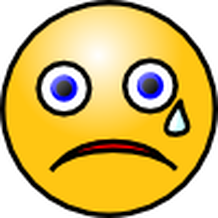 If you are a big name author you can probably ride out the storm created by expressing your views in public. I could list a dozen authors who have created social media storms on a range of issues and their careers haven’t suffered. However, I know of one big name who can't now get a job cleaning sewers because no one will employ him anymore. He’s an actor. He made his political views public and it has ruined his acting career. Can you, as an Indie author, take that risk? Your career could be over before you’ve even sold your first book. Not only that, but everything you say on social media remains there forever, somewhere, lurking and waiting to be exposed by someone with an axe to grind. When you are better known, as we all hope to be, it can also come back to haunt you. Even if you have modified your views over the years and you no longer believe as you did back in the day, no one will believe you. After all, we all know that leopards can’t change their spots, don’t we?  Of course, people can (and do) change, but the people who are out to embarrass you will assert that you haven’t changed, and other people will listen to them because it will be hard for you to prove that you have changed. The only way you will be able to restore your reputation will be to hire a very expensive PR agency to give your public image a make-over and nobody wants to have to spend that sort of money. As I said, it doesn’t matter which side of the argument you are on, the people on the other side of it will either stop buying your books or, worse, will try to take you down for having the temerity to express your opinions. Of course, there are times when you can introduce politics into novels with broad appeal. For example, in novels set during the 1930s and 40s, making your protagonist an anti-fascist is fine. Similarly, for books set during the Cold War it would be OK for them to be anti-communist. But those are areas where there is broad agreement that the relevant regimes were evil. They are the exception, not the rule. And if there are readers who think those regimes weren’t evil, you probably aren’t too bothered about alienating them. 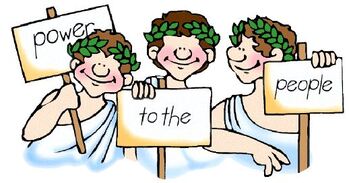 In political thrillers it may seem obvious to align your characters to a political party, but that way lies madness. No matter on which side you place them, someone is going to take offence, especially if it is hinted that everyone who supports a similar political line is tarred with the same brush. Make a politician corrupt or venal and suggest that they belong to party X and not to party Y, and you are bound to upset all the supporters of party X. That could be up to 50% of the reading public in some countries. Making religious figures corrupt or evil is just as bad. 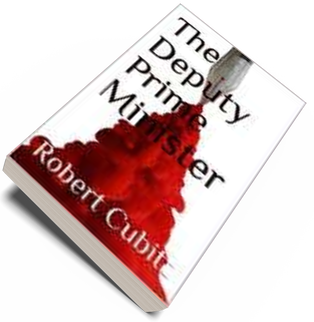 One of our authors wrote a political thriller and left the actual politics ambiguous. After all, personal greed and ambition are not limited to one party or another, because it is the individual that is greedy or ambitious. A study of scandals relating to the conduct of individual politicians will reveal that no party ever comes out of things squeaky clean. (We’re not going to name names, for the reason with which we started this blog). So, when it comes to politics, religion and other topics where people are divided, if you decide to dabble, either on social media or in your books, take care because you are entering shark infested waters. And if you feel you really must nail your colours to the mast on social media, write under a pen name so no one knows who you really are, or use a fake name on social media. If you have enjoyed this blog, or found it informative, then make sure you don’t miss future editions. Just click on the button below to sign up for our newsletter. We’ll even send you a free ebook for doing so. 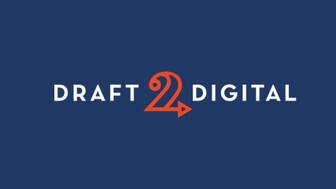 Big news - we have recently put some of our titles onto Draft2Digital. We decided to do this because, by keeping them exclusive to Amazon, we were actually narrowing our sales channels when we should really be going wider. Not everyone uses Amazon to purchase their books, so we were losing quite a lot of opportunities to offer our titles to those people. There was one advantage to using Amazon. That was their KindleUnlimted (KU) programme. We get a lot of downloads through KU and they account for a significant proportion of our revenue. But if we put our ebook product onto other distribution platforms, we aren’t able to use KU, so we risk that income. And yes, Amazon do check the other retailers to make sure we aren’t cheating.* 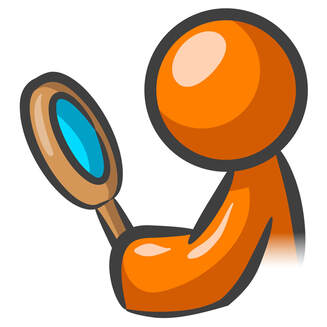 So, we analysed our income by title and it didn’t take a lot of time to realise that many of our titles aren’t read using KU, though they are purchased in ebook or paperback format. For some reason those books don’t seem to attract KU readers. Five of the titles are non-fiction and that may have something to do with it. The remainder do get the occasional KU download, but not enough to justify us making them exclusive to Amazon. OK, back to basics; just who are Draft2Digital (hereafter referred to as D2D)? Basically, they are similar to KDP in that they allow Indie authors and small publishers like ourselves to upload their books to them, which they then distribute to retail channels. They also offer formatting services, cover creation (not cover design as such) and a few other whistles and bells. But their big selling point is that they distribute books through a wide range of on-line retailers.  How many? Here’s the complete list (at time of writing): Apple Books, Barnes & Noble, Kobo, Scribd, Smashwords, Tolino, Overdrive, bibliotecha, Baker & Taylor, BorrowBox, Hoopla, Vivlio and Palace Marketplace. They will also distribute via Amazon if your book isn’t already on there, so it really is a “one stop shop”. Several of the companies listed above are aimed at the book borrowing market rather than the retail market, so in that respect they are similar to KU. I’m not suggesting that is 100% of the on-line book market, but it is a lot more than Amazon by itself. If you are considering distributing your book as an audio title, they also offer audiobook services, including helping you to find a narrator. This service may be cheaper than ACX.com, but only marginally (see previous blogs on the subject of audiobooks).  So, what is D2D like to work with? First of all, using the files we had already uploaded to Amazon caused us problems. Any reference to Amazon in the MS caused it to be rejected, as did references to ebooks in paperback MS’s. As we often insert a preview for another book at the end of an MS, with a link to its Amazon sales page, this meant having to go back and remove those references and links. You may also have to remove contents pages if you want D2D to insert a contents page complete with hyperlinks. The same applies to copyright pages, dedications etc. however, you can opt to use the ones that are already embedded in your files.  If you already have a cover for your ebook then it will probably upload OK to D2D, but when we uploaded our paperback covers we had some rejected because the back cover blurb was “blurred”. We had used shadowing behind the text and D2D’s quality bots couldn’t handle that. They also reserve more space for an ISBN than Amazon, so if any text encroaches into that space it will result in the cover being rejected. Paperback covers also have to conform to the D2D standard trim size, which is 5.5 x 8.5 inches (14 cm x 21 cm). If your covers are bespoke, created for you by a designer, you may have to go back and get them to adjust the size. However, if you created your own cover using packages such as BookBrush, you can alter the size yourself (don’t forget to adjust the positions of the text). I guess that sort of thing is all part of the learning curve for a new app, but it was frustrating and continues to be so as we have to change our cover designs and edit our MS’s in order to overcome these issues. 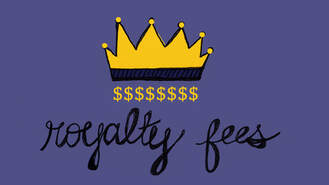 What about royalties? As with Amazon, you can set your own price for your books, which means you have control over the amount of royalties you receive once D2D and its partners have taken their share of the sale price. Unlike Amazon, which has two options for royalty percentages, D2D has only one, which is the sale price minus distribution charges. You also have the capability to run price promotions for ebooks and you can price your book to make it free, but not on Amazon. The price for Amazon will automatically be set to a minimum of 99c (99p). What is worth noting is that the printing costs for paperbacks seem to be much higher on D2D, which makes them less competitive than Amazon. To reduce the price to what you may have set on Amazon, you would have to reduce the amount of royalties you earn. In some cases it may not be possible to price-match to Amazon and still earn any royalties at all. Conversely, you could increase your paperback prices on Amazon, but that may make them less competitive compared to works by other authors. If you aren’t as famous as J K Rowling, you can’t charge J K Rowling level prices. 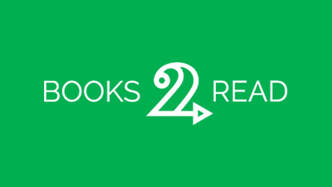 In terms of marketing tools, D2D has a partner site called Books2Read (hereafter referred to as B2R). It's basically a resource for readers to use to find books they may like. When your book is published its details are automatically copied across to B2R along with a “universal book link” (UBL) that allows the reader to go direct to their preferred retailer in their preferred country to buy the book. One of the tools B2R offers to authors is “new release notifications”. These are automated emails sent to readers who are registered on the site and who are signed up to your profile, so once you have uploaded your book, this tool helps your readers to find it. This is something I think gives D2D a real edge over Amazon, because any marketing you do through them has to be paid for. 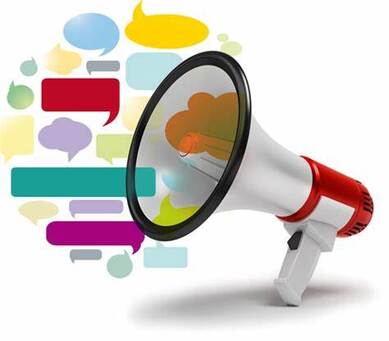 OK, it’s a one shot deal, but one shot is better than no shot at all. It’s also fully automated, so you don’t have to do anything except register your book for the notification system and D2D has a pop-up for that which appears when you press the "publish" button.. You’ll know when the email notification has been sent, because you’ll receive a copy. Other than B2R there are no real marketing tools for you to use. They don’t have an equivalent to Amazon Ads, which is a shame. Somehow I think D2D is missing a trick here and is also limiting the ability of authors to market the books they have so painstakingly uploaded onto their site. On the other hand, it does create a “level playing field” for all their authors, because you can’t “buy” success through advertising. Everyone has the same chance of being discovered if readers are looking for their genre of books. Of course, you still have the option to advertise your books using other channels, such as Google, Facebook, Twitter et al. Make sure you include the UBL in your advert so that readers buy it through D2D rather than go looking on Amazon.  So, has this switch resulted in thousands of new sales? Well, it’s early days yet. What I can tell you is that we had sales within days of uploading our first book to the site. Not many, I’ll admit, but sales are sales and we hadn’t done any marketing work for the book. Readers found them for themselves and that rarely happens on Amazon. We’ll let you know more when we start to get some results worth talking about. In the meantime, check out D2D for yourself and see what you think. It costs nothing to look. * We know Amazon (actually their bots) goes looking, because we got a “cease and desist” email from them for one of our books which was uploaded to Smashwords some years ago and we had forgotten to take it down when we enrolled the same title on KU. Amazon threatened to withdraw our earnings for the book if we didn’t unpublish it from Smashwords. They’d actually found the book on the Barnes & Noble website, who Smashwords were using as one of their distributers. If you have enjoyed this blog, or found it informative, then make sure you don’t miss future editions. Just click on the button below to sign up for our newsletter. We’ll even send you a free ebook for doing so. |
AuthorThis blog is compiled and curated by the Selfishgenie publishing team. Archives
March 2025
|
 RSS Feed
RSS Feed